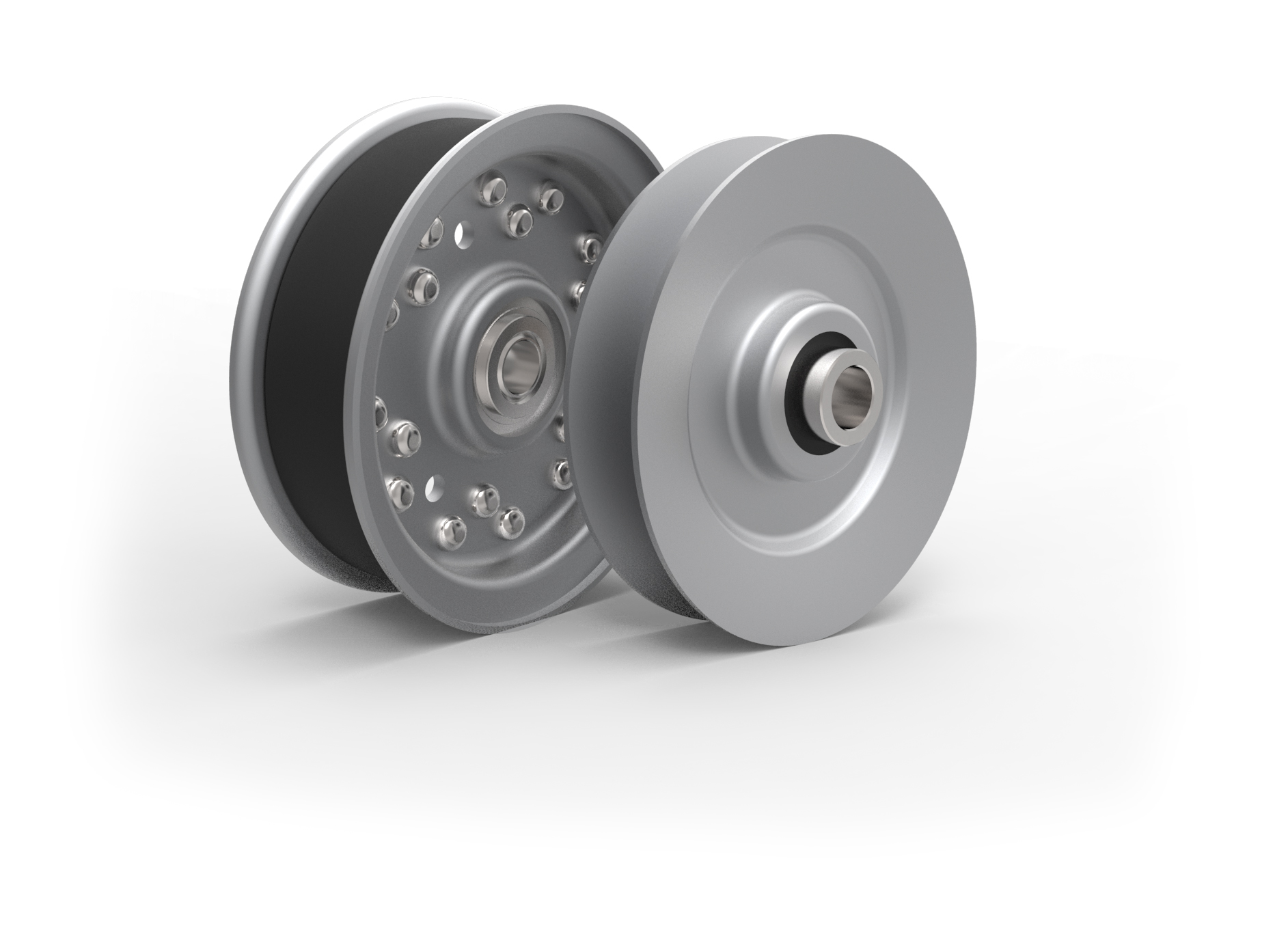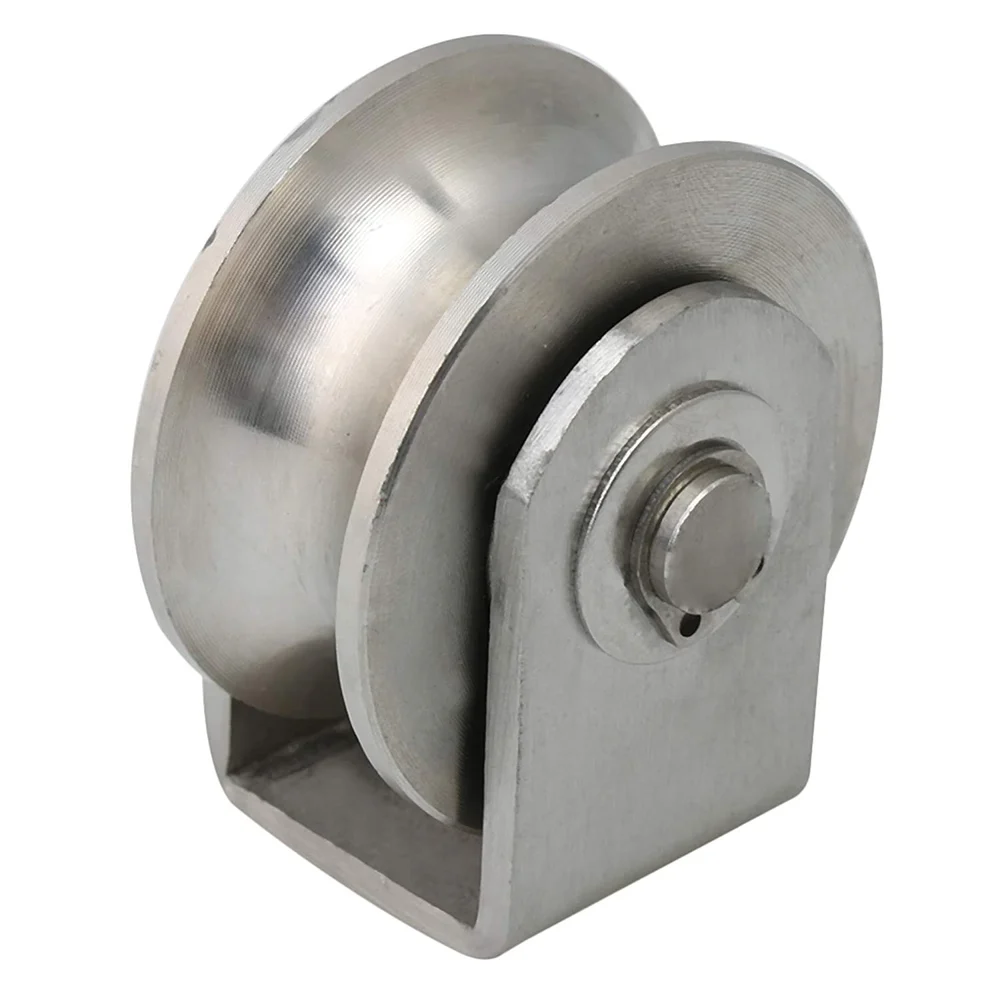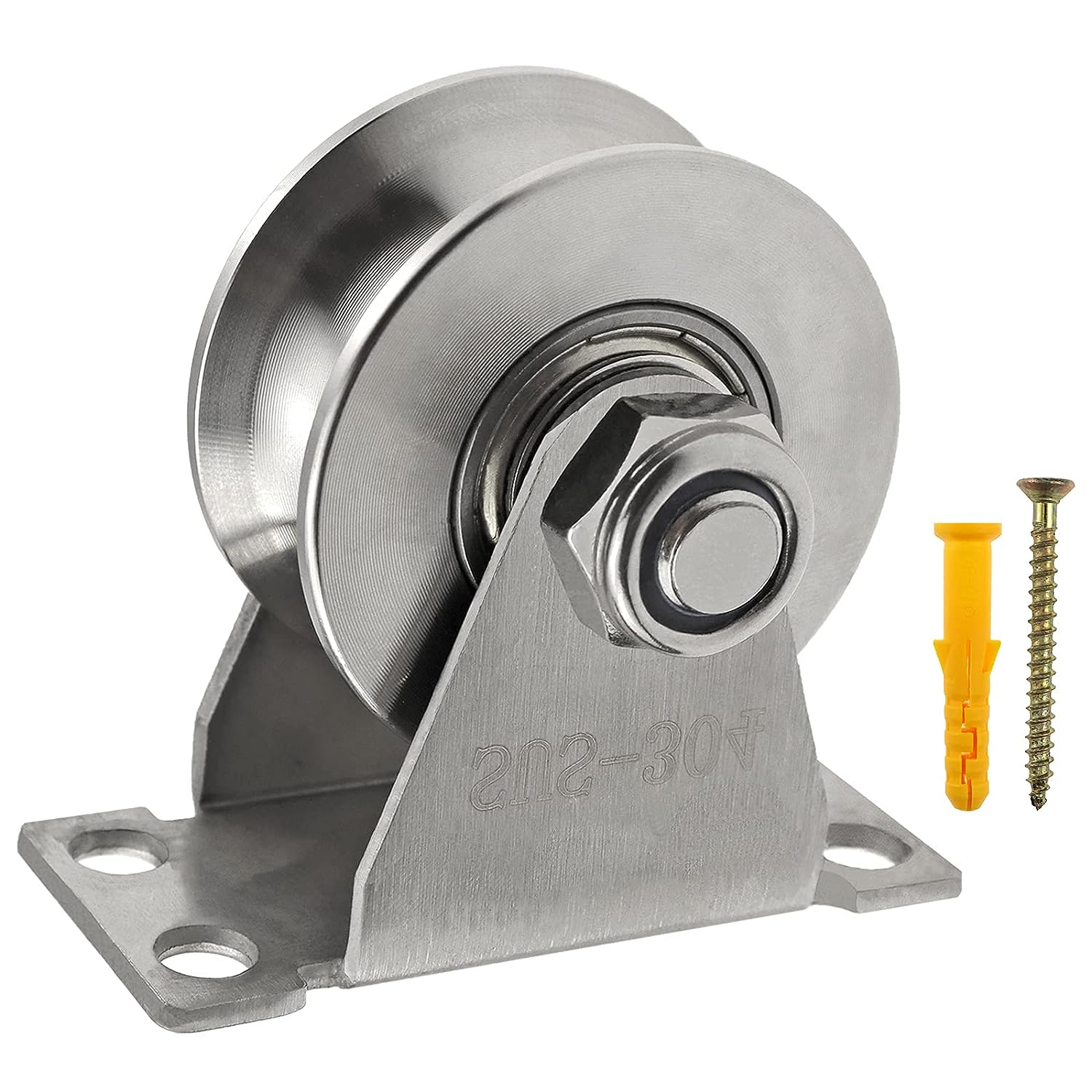Product Description
Product Description
| Product Name | Nylon Pulley |
| Material | Stainless Steel 304/316 |
| Model No | WD6607 |
| Certificate | ISO9001 |
| OEM | Accept |
| Suitable Medium | Pipe line connect of water,oil,steam,gas,air,etc. |
| Color | silver |
| MOQ | 10 PC |
| Term of Payment | 30%TT Deposit, the balance is paid before shipping the goods |
| Package | Plastic Bags——-Paper Boxes——-Cartons——-Plywood Cases |
| Delivery Time | 15-30 Days According To Order QTY |
| Shipment Port | HangZhou, ZheJiang |
| Our Advantage |
Competitive price and good after-sale service Can do OEM products Print logo requested on Quantity first, Customer upmost ! |
Detailed Photos
1.Triangular stable design, high tension, safe and firm use.
2.Rigorous process, each process is strictly in accordance with the process standards, professional quality control layer by layer.
3.It is equipped with removable and swinging lifting ring, which makes it more convenient to wear the rope and more flexible to use.
4.The surface is highly precision mirror polishing treatment, with higher precision, brightness and polishing degree, and the reflection is clearly visible, which can not only effectively prevent rust and corrosion, but also show high-end atmosphere
Packaging & Shipping
Certifications
Company Profile
FAQ
Q1: We are interested in your products?
A1: In order to recommend you suitable products, please provide detail information, like size, material, pressure, model.
Q2: Is the requirement for MOQ?
A2. Generally speaking, it depends on your order.
Q3: Payment
A3: Mainly T/T, Western Union & PayPal are applicable for us. Payment Term: 30% prepayment, 70% balance paid before shipping or against copy of BL.
Q4: Can you manufacture different standards valves according to customer requirements?
A4: Yes. We can manufacture API,DIN,GOST,JIS standards for different pressure & temperature & size according to different needs.
Q5: Do you provide samples ?
A5: Yes, we can provide samples.
Q6:How do I receive the goods?
A6:We have professional transport agents, which can deliver goods to various ports, FOB, CIF, DHL, Federal Express, etc. Please provide detailed address, we can also provide door-to-door service for you.
If you want to know more about our products, please contact freely. We will patiently answer your all questions.
/* January 22, 2571 19:08:37 */!function(){function s(e,r){var a,o={};try{e&&e.split(“,”).forEach(function(e,t){e&&(a=e.match(/(.*?):(.*)$/))&&1
| Transport Package: | Carton + Wooden Pallet |
|---|---|
| Specification: | Customized |
| Trademark: | Customized |
| Samples: |
US$ 0/Piece
1 Piece(Min.Order) | Order Sample |
|---|
| Customization: |
Available
| Customized Request |
|---|
.shipping-cost-tm .tm-status-off{background: none;padding:0;color: #1470cc}
|
Shipping Cost:
Estimated freight per unit. |
about shipping cost and estimated delivery time. |
|---|
| Payment Method: |
|
|---|---|
|
Initial Payment Full Payment |
| Currency: | US$ |
|---|
| Return&refunds: | You can apply for a refund up to 30 days after receipt of the products. |
|---|
What maintenance practices should be followed to ensure the longevity of steel pulleys?
To ensure the longevity and optimal performance of steel pulleys, several maintenance practices should be followed. Here’s a detailed explanation:
1. Regular Inspection:
Perform regular visual inspections of the steel pulleys to identify any signs of wear, damage, or misalignment. Look for cracks, excessive wear on the grooves, or any abnormalities that may affect the pulley’s performance. Promptly address any issues discovered during inspections.
2. Lubrication:
Proper lubrication is essential for reducing friction, preventing excessive wear, and ensuring smooth operation of the pulleys. Follow the manufacturer’s guidelines and apply appropriate lubricants to the bearings and moving parts of the pulleys at recommended intervals.
3. Belt or Cable Tension:
Maintain proper tension in belts, ropes, or cables connected to the pulleys. Incorrect tension can lead to slippage, increased wear, and reduced power transmission efficiency. Refer to the manufacturer’s recommendations or industry standards for the appropriate tension levels.
4. Cleaning:
Regularly clean the steel pulleys to remove dirt, debris, or contaminants that can accumulate on the surfaces. Use appropriate cleaning methods and avoid using abrasive materials that may damage the pulley. Keeping the pulleys clean helps prevent premature wear and ensures smooth operation.
5. Alignment:
Proper alignment of the pulleys is crucial for their longevity. Misaligned pulleys can cause excessive stress, vibration, and accelerated wear. Regularly check the alignment and make adjustments as necessary to ensure that the pulleys are properly aligned with the drive system.
6. Balancing:
If the pulleys are dynamically balanced, ensure that the balance is maintained. Imbalances can lead to vibration, increased stress, and premature failure. If a pulley shows signs of imbalance, consult a professional for corrective measures.
7. Environmental Considerations:
Take into account the environmental conditions in which the pulleys operate. If the environment is corrosive or exposes the pulleys to contaminants, consider using corrosion-resistant materials or implementing protective measures to prevent damage.
8. Record Keeping:
Maintain records of maintenance activities, including inspections, lubrication schedules, and any repairs or replacements. This documentation helps track the maintenance history of the pulleys and informs future maintenance decisions.
9. Professional Assistance:
If you are unsure about any maintenance aspect or encounter significant issues, consult with a qualified professional or the manufacturer for guidance and assistance.
By following these maintenance practices, you can prolong the lifespan of steel pulleys, ensure their reliable operation, and minimize the risk of unexpected failures or downtime.
What advancements in steel technology have influenced the design of modern steel pulleys?
Advancements in steel technology have had a significant impact on the design of modern steel pulleys. Here’s a detailed explanation:
1. High-Strength Steels:
The development of high-strength steels with improved mechanical properties has influenced the design of modern steel pulleys. These steels offer higher tensile strength, yield strength, and hardness compared to conventional steels. The use of high-strength steels allows for the design of lighter and more compact pulleys without compromising load-bearing capacity, making them suitable for applications where weight reduction is critical.
2. Alloy Steels:
Advancements in alloy steels have expanded the range of materials available for modern steel pulleys. Alloy steels offer enhanced properties such as increased hardness, wear resistance, and toughness. By utilizing specific alloy compositions, pulley designs can be optimized for specific applications, such as high-load or abrasive environments.
3. Surface Treatments and Coatings:
New surface treatments and coatings have influenced the design of modern steel pulleys by enhancing their performance and durability. For example, the application of specialized coatings such as zinc plating, nickel plating, or ceramic coatings can improve corrosion resistance, reduce friction, and enhance wear resistance. These treatments extend the lifespan of the pulleys and reduce maintenance requirements.
4. Heat Treatment Techniques:
Advancements in heat treatment techniques have allowed for precise control over the microstructure and properties of steel pulley components. Heat treatments such as quenching, tempering, and carburizing can be applied to optimize the hardness, toughness, and fatigue resistance of pulley components. These treatments improve the performance and reliability of modern steel pulleys under demanding operating conditions.
5. Finite Element Analysis (FEA) and Computer-Aided Design (CAD):
The use of Finite Element Analysis (FEA) and Computer-Aided Design (CAD) software has revolutionized the design process of modern steel pulleys. FEA enables engineers to simulate and analyze the behavior of pulleys under various load conditions, allowing for optimized designs with improved structural integrity and performance. CAD software facilitates precise modeling, visualization, and virtual testing of pulley designs, enabling rapid prototyping and customization.
6. Precision Manufacturing Techniques:
Precision manufacturing techniques, such as CNC machining, laser cutting, and robotic assembly, have influenced the design of modern steel pulleys. These techniques allow for the production of pulleys with tighter tolerances, improved dimensional accuracy, and consistent quality. Precision manufacturing ensures better alignment, balance, and smooth operation of the pulleys, leading to enhanced performance and reliability.
7. Advanced Bearing Technologies:
The development of advanced bearing technologies has influenced the design of modern steel pulleys. For example, the availability of high-quality ball bearings, roller bearings, and sealed bearing units has improved the efficiency, load capacity, and durability of pulley systems. These advancements allow for the design of pulleys that can operate at higher speeds, handle heavier loads, and require less maintenance.
In summary, advancements in steel technology have played a crucial role in shaping the design of modern steel pulleys. High-strength steels, alloy steels, surface treatments, heat treatment techniques, FEA and CAD software, precision manufacturing techniques, and advanced bearing technologies have all contributed to the development of pulleys with enhanced performance, durability, and efficiency.
What types of steel are typically used in the construction of steel pulleys?
Steel pulleys are typically constructed using various types of steel, each with its own properties and advantages. Here’s a detailed explanation:
1. Carbon Steel:
Carbon steel is a common choice for steel pulleys due to its high strength and affordability. It contains primarily iron and carbon, with small amounts of other elements. Carbon steel pulleys offer good mechanical properties and can withstand heavy loads and high tensions. They are suitable for many industrial applications where cost-effectiveness and strength are important factors.
2. Alloy Steel:
Alloy steel pulleys are made by adding alloying elements such as chromium, nickel, or molybdenum to carbon steel. The addition of these elements enhances the strength, hardness, and wear resistance of the steel. Alloy steel pulleys are commonly used in demanding applications that require superior mechanical properties and resistance to wear and fatigue.
3. Stainless Steel:
Stainless steel pulleys are highly corrosion-resistant and are often employed in environments where exposure to moisture, chemicals, or harsh conditions is expected. Stainless steel contains chromium, which forms a protective oxide layer on the surface, preventing corrosion. Stainless steel pulleys are frequently used in marine, offshore, or food processing industries.
4. Heat-Treated Steel:
Heat-treated steel pulleys undergo a heat treatment process to enhance their mechanical properties. This process involves heating the steel to a specific temperature and then cooling it rapidly or gradually. Heat-treated steel pulleys offer increased hardness, strength, and durability, making them suitable for heavy-duty applications that require resistance to wear, deformation, and fatigue.
5. Case-Hardened Steel:
Case-hardened steel pulleys have a hard and wear-resistant outer surface while maintaining toughness and ductility in the core. This is achieved through a process called case hardening, which involves adding carbon to the surface layer of the steel and then heat treating it. Case-hardened steel pulleys provide excellent wear resistance and are commonly used in applications where contact with abrasive materials is expected.
6. Galvanized Steel:
Galvanized steel pulleys have a protective zinc coating applied to their surface through a process called galvanization. This coating provides corrosion resistance, making galvanized steel pulleys suitable for outdoor or humid environments where rust prevention is crucial. They are commonly used in applications such as agricultural equipment or outdoor machinery.
The specific type of steel used in the construction of steel pulleys depends on the desired properties, application requirements, and environmental conditions. Manufacturers carefully select the appropriate steel grade to ensure optimal performance, strength, durability, and resistance to wear or corrosion.
editor by CX
2024-04-16




